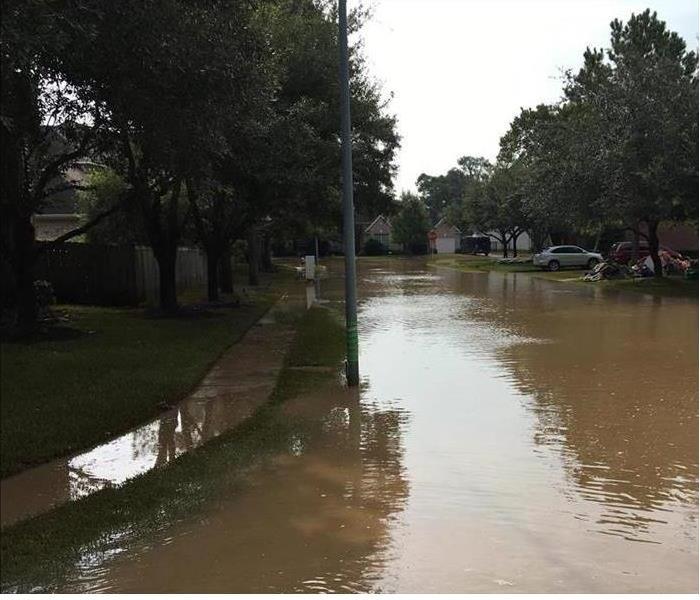Why SERVPRO Is The Leader In Flood Damage Restoration
4/1/2020 (Permalink)
 We have the equipment, experience and expertise to restore your home after a flooding disaster. We are available 24/7 so call us right away.
We have the equipment, experience and expertise to restore your home after a flooding disaster. We are available 24/7 so call us right away.
Flood Damage Experts Describe Structural Drying Techniques
During the spring, thunderstorms tend to plague the region often causing issues with your property and house's structure. Many times flood damage goes unnoticed especially if it happens when nobody is present at your home. Several of the situations our SERVPRO technicians handle regularly involve incidences where the water has receded, but many of the house's contents and structural components are still wet. Damp materials inside a building can cause elevated humidity levels which can create a situation where moisture spreads throughout the home and affects more areas over time. If organic materials are affected during your flood damage scenario, then it is possible that mold can develop.
When working on most storm-related projects, our SERVPRO crew starts by extracting any water while it is still in its liquid form. However, if most of the water is gone once we arrive, then the focus of your flood damage project changes to structural drying. During the drying process, we attempt to create an environment that speeds up the natural evaporation process. We do this by setting up large box fans and air movers to create air movement as well as implement dehumidifiers to reduce humidity levels. If there is a large amount of moisture that has soaked into your building materials and contents, we can set up more dehumidifiers that will help pull moisture out of the affected items.
When it comes to dehumidifiers, our SERVPRO technicians have the option to utilize either a refrigerant or desiccant type machine. Refrigerant dehumidifiers pull wet air past a cold coil which causes the moisture to condense and turn back into a liquid. These systems work best to remove surface moisture and to dry wet materials that are moderately to highly porous and permeable by water and air such as carpet, pad, and drywall after flood damage.
Desiccant dehumidifiers pull wet air across a silica gel that attracts water molecules. These systems get utilized to help dry out materials that are dense and have low porosity and low permeability like hardwood floors, framing materials, and concrete. If your contents or building materials ever get wet after a storm, call SERVPRO of Kingsport / Bristol at (423) 245-5552 24 hours a day.






 24/7 Emergency Service
24/7 Emergency Service